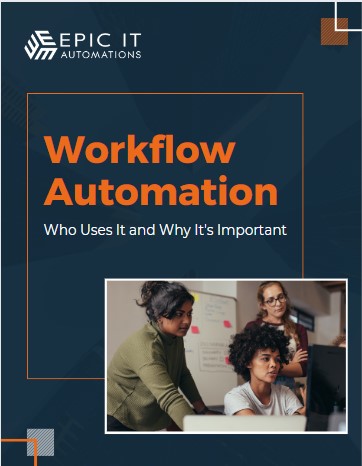When you first start with new workflow automation software, it’s important to have a game plan for how you will move forward. The best way to get your feet wet with our software is typically to dive in and start building a workflow.
Let’s take a step back – before we dive any deeper into stepping in the software. Let’s go over a few steps that you will want to take when wanting to get started building processes with Integrify. These tips could be used no matter what process you are working on getting started with – HR, Finance, Marketing; these tips will work for you!
Layout The Steps
Typically, your mind might be on autopilot when sending emails for approvals, forwarding a document for a signature, or sending something back to a colleague. But it’s important to lay out what exactly these steps are. Start with the process you’d like to begin on and grab a piece of paper or something you can lay out your thoughts on and make your own flow. Write down the forms included, approvals needed, PDFs used, etc. Lets say for instance, you want to break down the time off process your company does now. You may know that…
- You have to send an initial request to your manager
- Your boss approves your time off
- HR gets involved to make adjustments to your record
- Someone in HR will send you an email with your new time off approval and remaining time off
You’ve started your first step of building out your very first process!
Map Out The Steps
Start mapping out your thoughts above with step-by-step flow ideas of how this current process looks like on paper. This will be beneficial when it comes to building your first workflow. Where are the forms located? What forms would you like to include? What task do you want to come before or after something important? Do you want automation emails to populate and send throughout this process?
Plan Out Rules
When you look at that drawn-out flow, you now have a better understanding of all the steps involved. Do you want to add rules? Of course, you do! In this example, let’s say that your manager needs more information on your time off, for example, you left out the specific end date of your time off. They need more information! You might jot down that you would like to make a rule on step 3 that if they need more information, this rule will send the request off form back to the employee (requester) and have them refill the error on their end. Then after they complete that fix, it will automatically send it back to your manager so they can easily approve and it’ll be on its way to HR.
Have An End Goal In Mind
You always need to have that end goal in mind when laying out these rules, processes, and mappings. Let’s keep using the HR example – what is the end goal? We want it to be as easy as possible for the requester to get their initial form approved and sent to HR. If everything now is just via email, these requests may get lost in management emails and never gets passed along to HR. Our goal is simplicity. Automatic routing allows for documents and forms to be sent without the worry of things getting lost along the way.
You may want to send out automatic emails when you click “approve” or “need more information” this is a goal as well – being able to keep everyone in the loop.
Ready To Automate?
Contact Epic IT Automations and see how we can help you implement and automate business processes.









